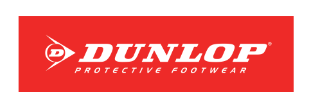
 |
Mark Sennett
Managing Editor |
 |
Kelly Rose
Editor |
How to Engage Employees, Managers & Directors in Safety8 October 2025 at 10:30 |
|
|
Under-reporting kills insight. Even the strongest controls and processes can fail when your workforce don’t speak up, log hazards and choose to close out actions. In this webinar we’ll discuss how organisations are boosting participation and learning by pairing psychological safety with easy-to-use technology. We’ll provide practical advice on how you can get your workforce engaged, then dive into what actually works on the frontline: mobile-first reporting, QR codes, anonymous options, and instant feedback that shows “you spoke, we listened.” |
Sponsored by  |
Turning data into insight: Accessing regulatory and population data from the Health and Safety Executive (HSE).14 October 2025 at 10:30 |
|
|
Data and its increasing potential to improve the way we work is a key priority area for the UK Government. Although it sounds complex - data is just another word for information. And it's something we all collect, but don't necessarily use to full advantage. We know this, because for over 50 years as Great Britain's health and safety regulator, we, as HSE have used robust analysis techniques to extract intelligence from the data we collect. We use it to inform and prioritise our regulatory activity, underpin our guidance and policy and support our scientific research activities. A great example of this is HSE’s National Population Database (NPD) that enables the estimation of residents, workers and other population types in Great Britain and can be used for planning, risk assessment, logistics and any activity that has an impact on populations. |
Sponsored by  |
Turning data into insight: Accessing regulatory and population data from the Health and Safety Executive (HSE).22 October 2025 at 10:30 |
|
|
As supply chains become more complex, EHS leaders face a growing challenge: ensuring every worker, internal or external, is trained, competent, and authorised to do the job safely and compliantly, and ensure the company they work for are complaint also. Join HSI Skillko for an informative webinar that will explore how workforce & company competency plays a central role in supply chain compliance. We’ll look at common blind spots in contractor oversight, the risks of disconnected systems, and how forward-thinking organisations are achieving greater control with digital, real-time solutions. |
Sponsored by  |
Sustainable safety footwear23 October 2025 at 10:30 |
|
|
In food processing, workers face long hours in cold, wet, or slippery conditions. Providing them with the proper footwear is not a luxury; it’s essential. It’s essential that they are provided with safety footwear that is engineered to provide the comfort and protection they deserve. This webinar explores sustainable safety footwear with a particular focus on the challenges of the food processing industry, which needs footwear that provides slip resistance. We will share how this can help reduce workplace accidents by up to 25%. Beyond protecting people, footwear choices directly affect a company’s bottom line. Standard material boots can wear out after just a few months, leading to constant replacements and hidden costs. By investing in better boots and PPR, companies can reduce turnover, improve productivity, and reduce the costs related to slips, trips, and falls. Food processors are under increasing pressure to meet sustainability goals, and every operational choice counts. Dunlop Protective Footwear has earned the prestigious ECOVADIS gold rating for the fourth year in a row. All of Dunlop’s boots, including the Food range, are manufactured locally in Europe using 100% renewable energy, delivering a measurable reduction in CO2 emissions per pair. |
Sponsored by  |
Beyond The Surface: Human Centric Strategies For Stronger EHS30 October 2025 at 10:30 |
|
|
Organisations all over the world experience complications, disruptions and failures that, in many cases, result in workplace incidents. As EHS professionals, our goal is to create healthy and safe operating environments for all workers. Unfortunately, that isn’t always successful. To better protect our workforce, we must take steps to understand where and how we can grow in the realm of health and safety. In this session, we will discuss how to proactively create EHS processes and empower our workforce using a range of proven tools, including gap analyses and a human-centric focus on EHS. |
Sponsored by  |
Is your driving for work policy compliant?6 November 2025 at 10:30 |
|
|
There are over 35,000 casualties each year, injured in road crashes that involve at least one person who was driving for work. Often these casualties are other, more vulnerable, road users such as pedestrians or cyclists. To protect your staff and your business, you need to ensure your drivers understand the importance of driver safety – and the good practice standards you expect when your staff are driving for work. |
Sponsored by  |
Adapting to Generational Shifts in the Workplace11 November 2025 at 10:30 |
|
|
With Millennials and Gen Z comprising a larger portion of today’s workforce, organisations need to rethink their approach to workplace safety, health, and well-being. What can safety leaders do to help their organisations meet the needs of this generation? Join Scott Gaddis, VP of Safety and Health at Intelex, and Scott Gerard, Senior EHS Solutions Consultant at Intelex, for a fire side chat to reveal ways to connect across generations and create workplaces that are safer, more engaging, and built to last. |
Sponsored by  |
Too stressed to be safe?12 November 2025 at 10:30 |
|
|
This webinar will explore the growing issue of stress in the workplace, with a particular focus on how it impacts health and safety professionals. We will examine the key causes of stress within the profession, from increasing regulatory demands to the pressures of balancing compliance and operational needs. The session will then introduce practical ways in which technology can be used to reduce these stressors, streamline processes, and support better decision-making. |
Sponsored by  |
Designing Wellbeing Into Safety & Health Systems13 November 2025 at 10:30 |
|
|
Work-related stress, depression, and anxiety are now among the leading causes of workplace ill health in the UK, accounting for millions of lost working days each year. For organisations, this makes psychosocial risk both a safety challenge and an occupational health priority. Addressing it requires looking at physical and mental health together and ensuring employees are supported across their entire work journey. Join HSI Donesafe for this informative webinar, where we will discuss how organisations are responding to this challenge, and the role digital tools can play in turning guidance into action. Using frameworks such as ISO 45003 and HSE’s stress management standards as reference points, we’ll explore how a digital-first approach can make psychosocial risks visible, measurable, and manageable — enabling earlier intervention, stronger return-to-work processes, clearer reporting, and healthier outcomes for employees and organisations alike. |
Sponsored by  |
Welding and Abrasive Safety: Controls to protect workers and reduce risk19 November 2025 at 10:30 |
|
|
This webinar will address welding and abrasive hazards, highlighting how the right choice of PPE and abrasives can reduce risks and promote a safe, efficient work environment. Daily exposure to hazards such as welding fumes and hand-arm vibration is a reality for welders and metalworkers. The use of welding equipment and abrasive tools for tasks like weld preparation, welding, refinement, and finishing on different materials can result in respiratory, noise, injury, and vibration risks. However, innovative advancements in abrasives and PPE can control and offer enhanced protection to help mitigate these risks. Health & Safety Managers are crucial in ensuring safe procedures are followed, though they often face challenges in balancing safety with production demands. Join 3M Application Engineers Paul Spooner (PPE) and Theo Simon (Abrasives) to explore how innovative 3M solutions can enhance workplace safety and productivity. |
Sponsored by  |
Health, Safety and Fire CPD anywhere, anytime
The complete archive of on-demand webinars from Health & Safety Matters is now available at ignitecpd.com
Visit Ignite now









